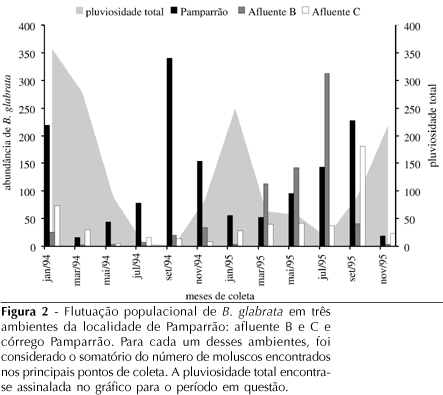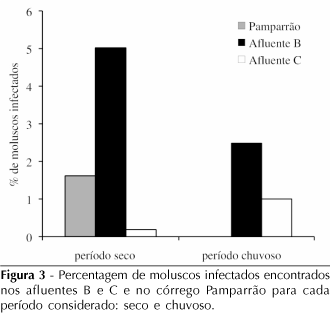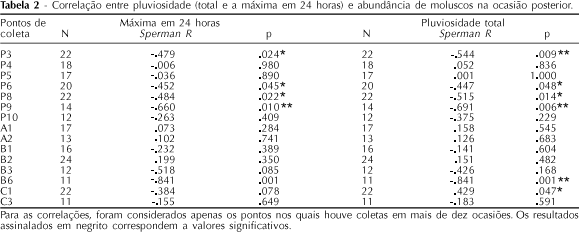OBJECTIVES: To investigate the spatial distribution, abundance and natural schistosomiasis infection levels in the snail Biomphalaria glabrata, the intermediate host of Schistosoma mansoni in an area of the State of Rio de Janeiro, Brazil. METHODS: In the Pamparrão area, Sumidouro county, RJ, Brazil, snail captures were carried out every other month from June 1991 to November 1995. There were 23 collecting sites along the Pamparrão stream and its three tributaries (A, B and C). Captured snails were examined in the laboratory for infection. Data analyses were performed using Spearman coefficient (0.5% significance level) and Qui-square test. RESULTS: The abundance of B. glabrata was variable in both time and space. Most of the collection sites showed a negative correlation with rainfall. The tributary B had the highest and most steady infection rates (more than 25% in some sites). There were found significantly more infected snail in the dry season (chi2 = 20.08; p=0.001). CONCLUSIONS: B. glabrata population in the Pamparrão valley was negatively influenced by rainfall, especially at the Pamparrão stream. The dry season seems to promote the infection probably due to the lower water volume, increasing the chance of interaction between the intermediate host and the parasite.
Schistosoma mansoni; Biomphalaria; Ecology, vectors; Host-parasite interaction; Spacial distribution; Schistosomiasis mansoni; Biomphalaria glabrata





